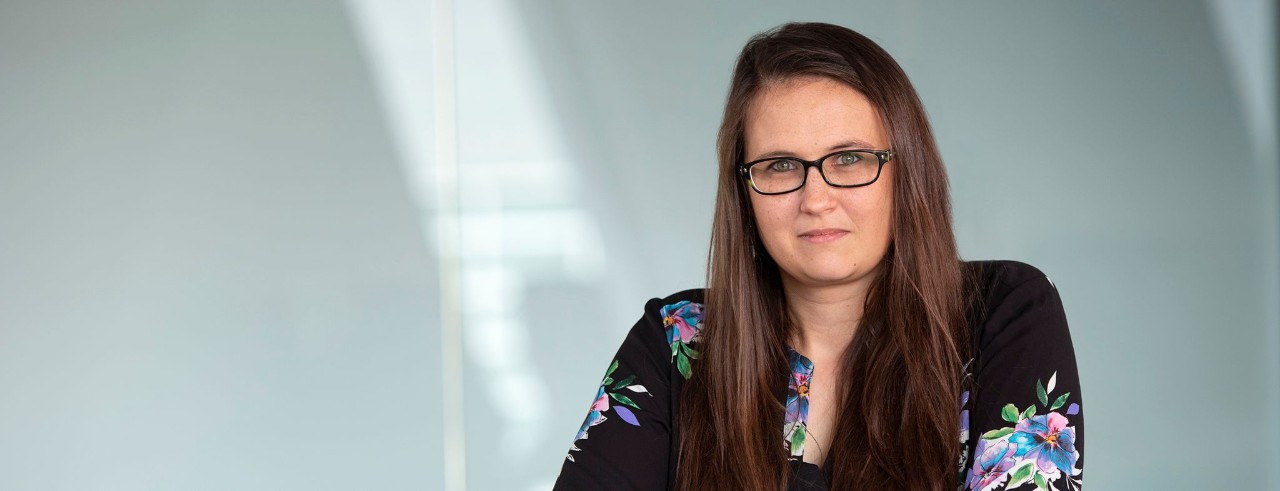
UC Answers: How are UC labs fighting COVID-19?
Lab supervisor describes the extent of the effort behind COVID-19 research at UC
"We’re excited because we work for an organization that supports research well and we’re headed in the right direction with the research that we’re doing," says Kristin Weghorn, senior research assistant and lab supervisor in the virology lab in the UC College of Medicine Division of Infectious Diseases.
She is leading the behind-the-scenes efforts to process samples from the many and varied COVID-19-related research projects at UC. Since the pandemic hit earlier this year, she and her colleagues have worked non-stop around the clock to help researchers try to find treatments and a cure for the novel coronavirus.
Q: How is UC impacting the COVID fight through its research labs?
Weghorn: UC is impacting the COVID fight through many aspects of research. I would say if you’re involved in any sort of research at UC, your attention has shifted to COVID-19. At the end of the day, it’s all about patient care. UC has placed patients at the forefront of everything they do around COVID-19. It’s all been about patient care and serving the community.
Q: There must be a great deal of pressure on researchers to make breakthroughs related to COVID. Can you share your view of these efforts?
Weghorn: There is a great deal of pressure on researchers to impact COVID-19. We have all been overwhelmed and busy with research but also there is some level of excitement and anticipation because ultimately the work we do on the front end affects the research on the back end. We want this research to be successful. We don’t want to put out sloppy results, and we want to put out quality work.
Q: What might surprise the average person about this work?
Weghorn: This work is tedious, it’s very time-consuming. You have time constraints to produce viable cells and process samples. Because this is a pandemic which surprised us all, we’ve had to almost reinvent the wheel on some processes and adapt as we go because it’s ever-changing, but at the same time put out quality work. The quality of the work over the quantity of the work is going to impact this research at the end of the day.
Q: Can you give us an idea of how many people are involved in COVID research at UC, and what kind of hours are they working?
Weghorn: People are working 60- to 80-plus hours, and I think the front line workers are ultimately the most affected by this. We have been in the lab for the entire pandemic, we have been doing research the entire time. There is a lot of stress and a lot of pressure, but if you keep at the forefront of your mind why you got into this role to begin with, that being taking care of patients and serving the community, it makes it worth it.
Q: What’s the general feeling of the research teams? Excitement, exhilaration, hope—how would you describe the mood?
Weghorn: There’s a little bit of a feeling of being overwhelmed, exhausted and overworked, but there’s also a level of anticipation and excitement for what’s to come. We’re excited because we work for an organization that supports research well, and we’re headed in the right direction with the research that we’re doing. That’s the reason we got into research, to serve the community.
Featured photo of Kristin Weghorn, taken by Colleen Kelley/UC Creative + Brand.
Discover more about clinical trials
UC is involved in many trials that are dependent upon members of our community and their willingness to take part as a patient. Read about UC's first dose of a COVID-19 vaccine. Share your desire to get involved in this important trial, or find more UC Answers to your important questions.
Related Stories
UC College of Nursing Professor honored with AANA education excellence award
December 23, 2025
Susan Newell, assistant professor in the UC College of Nursing, is being recognized by the American Association of Nurse Anesthesiology (AANA) as one of three top educational administrators and instructors. She will receive the Clinical Instructor of the Year Award during AANA's top educator event 2026 EDGE Conference, February 4-7 in Louisville, Kentucky.
Supporters give generously to the Bearcats Pantry and Resource Center
December 22, 2025
Supporters gave generously to the Bearcats Pantry and Resource at the University of Cincinnati during two fundraisers: the Crosstown Foodout and Giving Tuesday.
A partnership to end pancreatic cancer
December 19, 2025
Since 2010, BSI Engineering has raised more than $1.2 million for pancreatic cancer research at the University of Cincinnati Cancer Center in honor of a friend and inspiration to BSI’s founders, Bryan Speicher.
